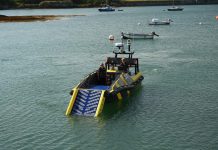A recent report by the American Wind Energy Association (AWEA) indicates that 2015 truly was a banner year for the industry as wind accounted for 47 percent of new generation. During this past year, the United States added a total of 14,468 MW to its installed capacity. Wind added more capacity in 2015 than any other energy source, followed by natural gas at 35 percent and solar at 14 percent.
As the wind O&M industry matures, owners are becoming more educated and wiser to their post-warranty options, helping to create a clear shift in the O&M market where OEMs and ISPs will need to re-define their role and demonstrate new strategies to meet their increasing demands. As things move forward, a large number of owners are transitioning to a self-perform model for scheduled maintenances and small correctives. However, many are not planning to take on major components straight away, so the emphasis will be on making an old asset run better while lowering the cost of maintenance and increasing power output through new technology and data analysis. Yet the question remains of how can we—who live and work in this strategically important field—bring better tools, enhanced pricing, and quicker output to the table.
Recently, I have had business development conversations with large-scale utility producers and O&Ms who all share some of the same sentiments I expressed above. In addition to the productivity of a wind turbine, wind farm operators are increasingly interested in reducing their life-cycle costs through new services and equipment.
Below are 10 of the most common interests I heard during those collaborations:
1. More discussion surrounding remote monitoring, new preventative maintenance models, better use of condition monitoring, improved data analysis, and better systems that allow integration of all data into one system to eliminate redundancy in paperwork as well as incomplete and missing records (i.e., vibration or grease and oil analysis with SCADA and maintenance records)
2. Better benchmarking for industry standards and data mining for performance measuring
3. Standards and best practice applications to include inspection guidelines, troubleshooting guidance, and consolidated reporting
4. Reduction in reliance of cranes
5. Implementation of drones
6. More focus on component end-of-life, reliability, and reduced downtime
7. Better pricing among the competition
8. Awareness to CapEx and OpEx budgets as turbines approach end of warranty
9. Ease of use for systems and integration into ERP/CMMS as well as the elimination of cumbersome paperwork and missing and inaccurate information
10. Effective business case creation that justifies adding costly new systems
The last point strikes me as the most prudent of the concerns from my wind industry counterparts. As many of us would agree, in order to justify the purchase and incorporation of the new and better systems that help an O&M to operate and achieve organizational goals, there must be an accurate financial business case in place that represents return on investments (ROI). Economic buyers who have buying authority will inevitably require an accurate and detailed documented process that showcases actual and internal information justifying why, when, and what is in it for them and the company they oversee. External facts and numbers are important from a 30,000-foot overview, but the power of their organizational financials cannot be overstated. It then falls into the hands of the O&M provider to spend time with the companies to better understand their needs and pain points, as well as to provide information that eases and assists them in building the justification to move forward with these solutions.
Just as 2015 has been an exciting time for the wind industry and renewables, 2016 and beyond should prove to contain tremendous opportunity for those who embrace the mindset of working smarter — not harder — to tap into the momentum. The recent passing of the five-year production tax credit (PTC) will continue to bring stability to the industry and allow investors to get behind the commitment to and completion of projects. This can bring balance to the logistics of the supply chain and accommodate the increase of good quality paying jobs that are so vital to the U.S. economy. Having clean, reliable sources of energy are key to national security and go hand-in-glove with energy independence.

























